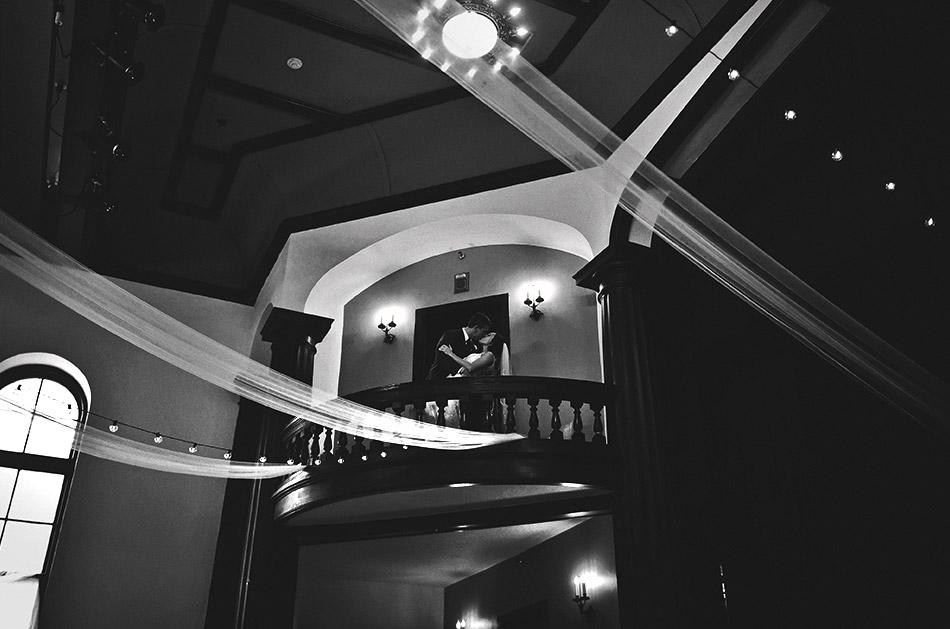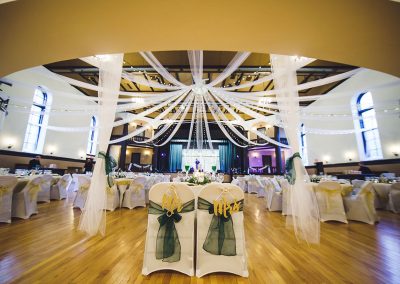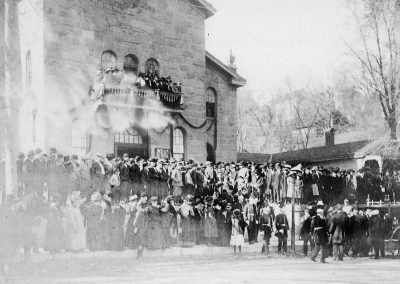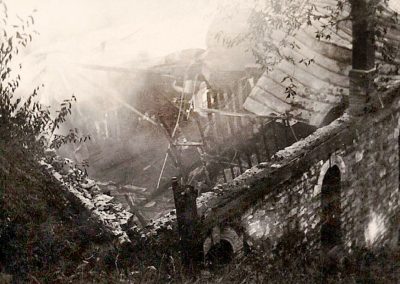Events Calendar

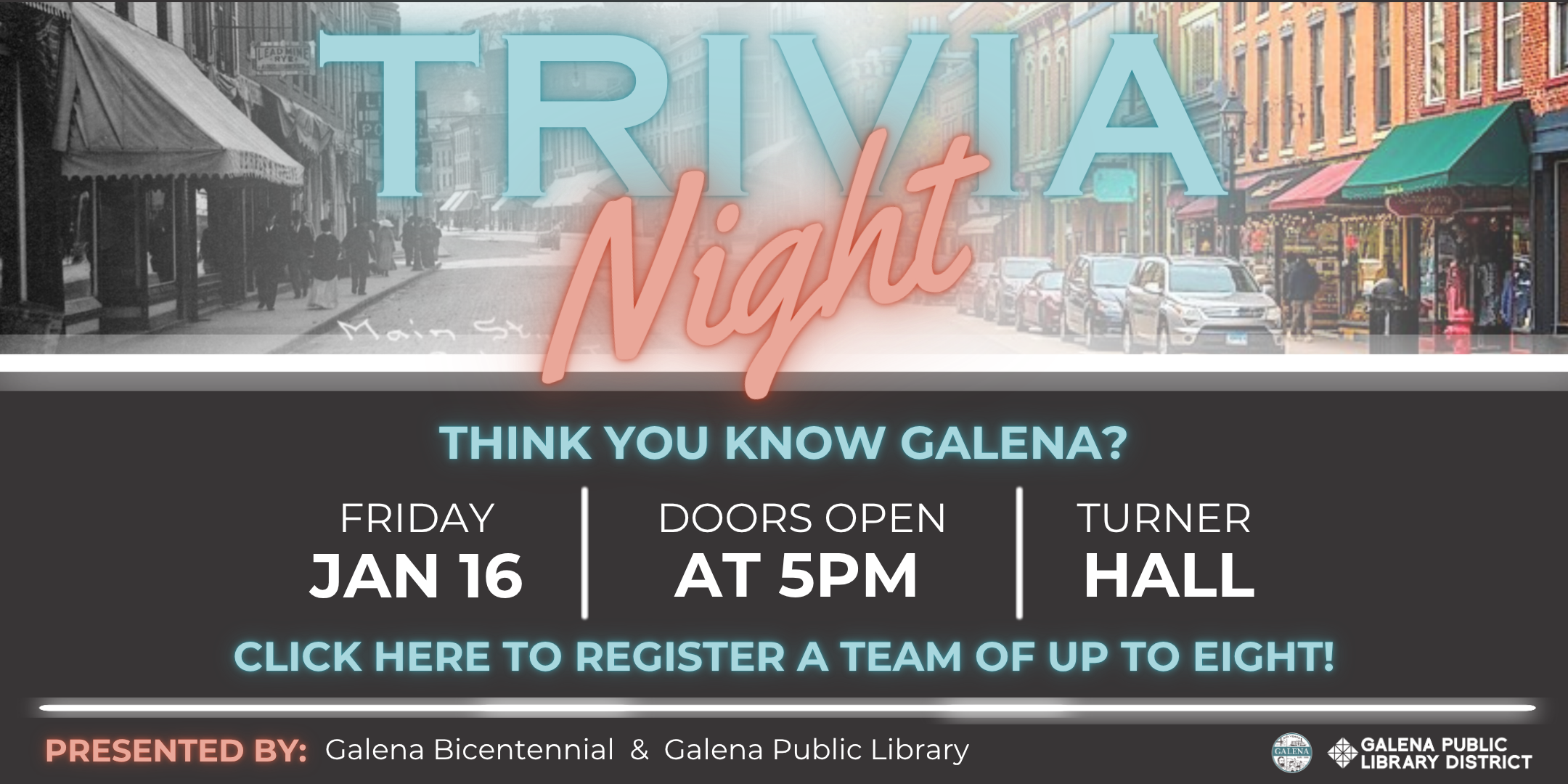
Galena’s historic Turner Hall was a 2019 recipient of a Landmarks Illinois Richard H. Driehaus Foundation Preservation Award. The annual awards call attention to the exceptional efforts of people who preserve important and historic places in their Illinois communities.
“The city of Galena and The Galena Foundation teamed up to restore the National Register-listed landmark so it could once again serve as a vibrant community center. Today, it serves as a venue for theater, music, dance, dinners and other community events.”
– Landmarks Illinois
“We knew Galena had a lot of options but we wanted a venue that was both unique and in itself embodied everything we love about Galena. We ended up finding Turner Hall by taking a trolley tour and learning they hosted events. We still find it so special that there is so much history packed into this building and that we are able to share in that history now with our wedding. The hall was perfect for our party both in size and in ambiance. We had a band, so the stage was an added bonus. We are so thankful for the hospitality the Turner Hall team provided. Our wedding would not have been as special if they were not involved.”
About
For almost 150 years, Turner Hall has stood tall at 115 South Bench Street in Galena. Owned and operated by the city of Galena, historic Turner Hall is air-conditioned, affordable, and available for rental by individuals and organizations for weddings, parties, meetings, concerts, dances, classes, lectures, fundraisers, and plays. Make Turner Hall part of your special day.
Rentals

The main area of Turner Hall is a large room with a stage at one end and a balcony (with 335 built-in seats) at the other end. As the hall is a multi-use facility, the main floor does not have built in seating.
To help keep the rental rates down, Turner Hall is do-it-yourself when it comes to setting up tables and chairs. We have tables and chairs, and they are included in the rental, but you are required to set them up before your event and put them away after your event.
You are free to decorate, without leaving any permanent marks, of course, but you must take down and dispose of those decorations at the end of your event. We have a custodian, so you don’t need to do any of that type of preparation, but when your event is over you do need to sweep up any mess on the floors, wipe up any spills, remove anything you brought in, and take the trash out to the dumpster in the parking lot.
Renters are responsible for any damage during their rental period. Alcohol is permitted, but groups and individuals are required to provide dram insurance that names the City of Galena as co-insured. The cost of the insurance varies but tends to run between $100 and $200 for a large wedding reception. You may purchase this insurance through any insurance company you like.
All rentals are required to have liability insurance. If you are interested in presenting a music, dance, or dramatic performance at Turner Hall, be sure to check out the stage dimensions and the information about our theatrical lighting system.
Finally, if you are ready to book the hall, call 815.777.1050 or email hdickerson@cityofgalena.org your booking request.
Rental Rates
Rental Contract
Contrato en Español

To make a reservation or to tour Turner Hall
Contact: Hillary Dickerson, facilities manager
Galena City Hall, 101 Green St. Galena, IL 61036
815.777.1050 | hdickerson@cityofgalena.org
Turner Hall is located at:
115 S. Bench St., Galena, Illinois
There is not an office at Turner Hall.
Administration is through:
City of Galena, 101 Green St., Galena, IL 61036
Phone: 815.777.1050
Fax: 815.777.3083
Email: hdickerson@cityofgalena.org
1872
The Turneverien (Turner) Society recognizes the need for a large civic building to serve membership and the city. Public awareness and fundraising commence. A building committee includes two prominent brewers in the community, people who know how to get things done.
1874
Cornerstone of Turner Hall is placed. A time capsule still exists in this dedicated area. In offering remarks that day, Frederick Stahl, the “president of the day,” notes the hall is “simple in style, durable in its dimensions, and in harmony with the means and wants of the community.”
1875
Turner Hall is complete at a cost of $15,000. The Turner Society promotes the opening, noting in a November 1874 Galena Gazette announcement that they will”fling to the breeze from the staff on the cupola . . . one of the finest flags ever brought to Galena.”
1926
The Eagles Club purchases Turner Hall for $10,000. Months later, in July, the building is destroyed by a massive fire. The insurance settlement was not enough to repair the building, so the community rallied, once again, to restore the beloved hall.
1927
Turner Hall (Eagle Auditorium) grand opening celebration hosts the world-famous production, “No No Nannette.” As the building nears completion, it is the talk of the town. Visitors are barred from the scene so work can be completed. Construction of the new hall costs $75,000.
1939
Turner Hall is sold to the City of Galena in August. The city agrees to pay back taxes in the amount of $1,933.58. Maintenance of the hall is becoming an increasing concern. Work is often delayed or dismissed until it is an emergency situation. A new boiler is purchased immediately, and events continue to take place at the building.
1949
Rental of the building decreases. Likely causes are the popularity of movie theaters and television for entertainment. The Turner Hall Commission reports that renting the hall is not providing enough revenue to make improvements.
1960
By 1960, Turner Hall is in a sad state. The Galena Art Theatre forms to produce plays in an attempt to raise money to preserve the hall. A small group of volunteers who loved the theater saw the old hall as a perfect venue for their activities. The group raised $600 in its first year, and the funds were given to the city to help with roof repair.
1970
“Save Turner Hall Fund” formed by Galena Arts Theatre to help preserve the building.
TODAY
Turner Hall continues to be a valued city treasure and is rented out for concerts, theater productions, and weddings. Rent is intentionally kept low to make it accessible to the citizens of Galena. Continued restoration is necessary to preserve this key piece of Galena history.
The Beginning
Friedrich Ludwig Jahn, a German educator and patriot born in 1778, recognized the importance of physical exercise and wanted to incorporate it into school programs. While teaching at a boys’ school in Berlin, he expanded gymnastic courses with the horizontal bar, parallel bars, side horse, balance beam, and vaulting horse. In 1811, he initiated mass open-air exercises in the first Turnplatz, or outdoor gymnasium. This gymnastics movement spread rapidly and Turnvereins, or associations of gymnasts, were formed. The word Turnverein comes from the German “turnen” to practice gymnastics, and “verein” which means club or union.
The purpose of this movement was two-fold, with a nationalistic motive to prepare German youth to defend their country against Napoleonic France. Gymnasts were encouraged to develop a spirit of patriotism and Deutschleit or “Germanness” along with gymnastic skills.
In the German states during the Revolution of 1848, some Turnverein members sided with factions who unsuccessfully revolted against the monarchy, and they were forced to leave the country. Turnveriens were subsequently established by such émigrés in other countries, notably the United States, at Cincinnati, Ohio, in 1848, where the organization now called the American Turners was founded.
The Turner Society in Galena
The Turnverien was founded in Galena in 1851 when the group met in a place called Harmonia Hall. While the original focus of the Turner Unions was the development of scientific gymnastics, that seemed to languish somewhat among young German-Americans. The association became mainly social, while the exercises were a means of occasional amusement. The Turners also had an auxiliary dramatic company which stored its scenery in Harmonia Hall. It appears that at this time, the Turners were made up of highly respected members of the Galena German population. The society continued until the outbreak of the Civil War, when it disbanded. The majority of its members, inspired by love for the flag of their chosen country, left their homes to assist in the war effort.
On April 6, 1872, the Turner Society re-organized and began to meet at Wierich Hall. As the numbers grew, members felt the need for larger quarters. Meanwhile, the general populace of Galena was also feeling the need for a large civic building. This was apparently a highly debated issue in town at that time, as described in the Galena Weekly Gazette of June 1874 when the cornerstone was laid for Turner Hall.
“Monday was a gala day in Galena, and one long to be remembered by her citizens. The erection of a public hall in this city was a necessity. Ways and means had been devised by the more enterprising ones, by which this great need could be met, yet the spirit of opposition prevailed, and the project sank out of sight, spasmodically coming to the surface, however, through the public print and amusement loving circles, whose indignations at the poor accommodations Galena offered to first class entertainments was expressed in words only, instead of efforts to remedy the evil. The subject was brought prominently before the public through the columns of the Galena Gazette during the past winter, and the absolute necessity of a public hall adapted to the wants or our city, clearly set forth.”
Breaking Ground
According to the Gazette, the Turner Society formed a building committee, “whose indomitable energy and perseverance, aided by this paper and many of our monied citizens” brought the building of a public hall reality.
The Turner Society purchased the land on April 1, 1874 for $1,050. The laying of the cornerstone was a huge event in June 1874. The Galena Gazette reported: “The day broke on a city alive with strangers from the surrounding villages, called thither to witness the pageantry and ceremony attending the laying of the corner-stone. Main Street was almost impassable, the hotels were crowded to their utmost capacity, and still each incoming train brought more. At half past 10 o’clock a.m. a signal from Liberty’s bell tower announced the time for morning the line, and a general rush was made for Bench Street where were quartered the different societies and companies, resplendent in gold lace and elegant attire, while over their heads floated silken banners bearing the insignias of the respective Orders. Although the sky was overcast with threatening clouds and the sun but occasionally lent its aid in enhancing the grandeur of the scene, it was such as to inspire the utmost enthusiasm on the part of the beholder, and not a little pride among the participators.”
The processional moved all through town and finally arrived at the future site of Turner Hall where an address was given by the President of the Day, Frederick Stahl. His address included the following: “Our city needs a public hall of sufficient capacity to accommodate a large audience, both for the purposes of amusement and instruction. This building, which is now being erected, appears to be well suited to meet the present and future wants of our city. It will present no stately columns, no beautiful statuary, no lofty dome to attract the wonder and admiration of the beholder; but it will be simple in style, durable in structure, simple in its dimensions and in harmony with the means and wants of the community. May I not add, that when finished, it will present to the mind a fitting emblem of the character of the sturdy men who are now engaged in its erection.”
Items hermetically sealed in a zinc box in the cornerstone included: A list of the members of the Turner Society, a copy of the subscription list and private donations for the Hall, a copy of the constitution and by-laws of the Turner Society, a copy of the Galena Daily Gazette of June 13, 1874, a copy of the Galena Weekly Gazette of June 12, 1874, a copy of the Volksfreund, several envelopes containing donated valuables, a book of poems, a collection of coins, and the bylaws of several Galena organizations. The cornerstone sits yet today.
At the time of the dedication, Mr. Charles Scheerer was treasurer of the Turner Society and for many years business manager of the hall. In March 1910, he suffered a fatal heart attack and died in the building that had been his pride and care for so long. At the time of his death, he was serving his third term as Mayor of Galena. According to popular local legend, he is currently making his home in the Hall, spooking innocent set builders and the like.
Back in 1875, the Hall was built for $15,000 and was considered by traveling entertainment companies to be one of the finest in northwestern Illinois. In fact, during the next few decades several illustrious visitors stopped at the Hall. In January 1877, Former Vice President Schuyler Colfax gave a lecture, and in March of that year, Charles Stratton, otherwise known as General Tom Thumb, visited, along with his wife, Lavinia Warren, Miss Minnie Warren, and Major Newell. The four little people were making their fifth visit to Galena, the first four appearing at Davis Hall. The Gazette reported: “Turner Hall was crowded last evening with people of all ages ranging from the two year old to the three score and ten, and more delighted audience never assembled in Galena—the little folks appeared during the evening in
comic and sentimental songs, tableaux, etc. and made a grand display in the costly silks, glittering diamonds and other ornaments.”
Other lecturers in 1879 included Wendell Phillips speaking about the fair treatment of Indians, and Franz Sigel, a brigadier general, about the Second Battle of Bull Run. According to the Gazette, Mr. Sigel “closed with a patriotic appeal to his hearers to do their full share toward the healing the wounds caused by the late war and restoring that fraternal feeling by which people of all parts of the union should be actuated, one toward another.”
On April 27, 1893, William McKinley arrived in Galena on a special train from Chicago. The reception committee escorted him from the Illinois Central Depot to the corner of Main and Green, where a parade was formed which proceeded to Turner Hall. McKinley was greeted with great enthusiasm as he stepped to the front of the stage. His oration lasted an hour. Three years later, he became President.
On April 27, 1900, Theodore Roosevelt, then Governor of New York and future Vice President and President, was a guest speaker at the U.S. Grant birthday celebration. He commented on “the fertile quality of the soil and the prosperity of the farming district” near Galena.
It wasn’t all lectures during those years. Turner Hall was the site of a mass mourning for U.S. Grant in 1885. There were also many social events, including masquerade balls and a New Year’s Ball on Dec. 31, 1878.
Around the turn of the century, the Turner Society sold the Hall to a stock company known as the Turner Opera House Association. Turner Hall became known as the Turner Opera House. Club meetings were held along with theatrical and musical events. In July 1911, the Galena Commercial Club held a banquet that included speeches by the members and a vaudeville performance. In September of that year “The Third Degree” was presented with the ticket price of $1.
The Fire
In the spring of 1926, Turner Hall was sold to the Eagles for $10,000. The very popular show “Abbie’s Irish Rose” was performed in April 1926. In May 1926, the Hall was officially dedicated as a combined opera house, dance hall, and general hall.
But luck was not with the Eagles. Ten weeks later, on July 1, 1926, the Old Turner Opera House was gutted by fire. The loss was considered nearly total or over $12,000. At 10:50 a.m., Mrs. F.H. Rickeman of Prospect Street turned in the alarm.
According to the Gazette: “Others also noted smoke issuing from the cupola of this massive building at about the same time but thought that bats or bees were being smoked out of the apex of this building. The custodian, Wiliam Wilhelmi, was working in the building at the time the general alarm was sounded and did not know that the structure was on fire until he came out to see where the fire was.”
The cause of the fire was never determined. At least one person reported seeing lighting strike the cupola. It was also suggested that faulty wiring might have been the culprit. There was also a faction that believed a pigeon brought a lit cigarette butt up into the cupola. Whatever the cause, the Hall was severely damaged and the $8,000 in insurance money was not enough to rebuild.
Rebuilding
The Eagles began fundraising efforts with plans to build a modest Hall. Those plans caused an outcry from the public who believed a grand, up-to-date building was necessary. The support for a modern large Hall was so great that the Eagles relented but asked for financial support from the citizenry. The Sept. 16, 1926 Gazette, included a list of people donating money to the cause.
Over the fall and winter of 1926, rebuilding progressed rapidly and was duly reported in the Gazette. In October there was news that the Hall would have separate restrooms for men and women. It was “indeed some task to blast and hew out the huge boulders for a furnace room and to make room for a stage and chair room underneath.” According to the newspaper, the Hall was set to open on Dec. 1.
In November, the Gazette reported: “Galena will no doubt be overly proud of its spacious modern hall with a stage as large as any theatre in the big cities, up to date balcony, steam heating plant, rest rooms, check rooms, etc.”
A big opening week was planned beginning Dec. 27. In mid-December it was reported that “two boxes are arranged at either side of the stage, each box accommodating parties of 8.” In the basement, in addition to the heating plant, there were shower baths and a dressing room. At that point, the Hall would open the first part of January.
Finally on Dec. 30, announcement was made that the Hall would open Jan. 7 with the world-famous production of “No No Nanette” the “round the world musical comedy sensation” with a notable cast of stars and a gorgeous garden of girls. Tickets for the grand event were $2 plus war tax. The Gazette’s headline after the event was “Eagle Auditorium Opening Most Successful Event ‘No, No, Nanette’ Super Fine.” Of special note was the marble floored lobby that was “Just a step from the old antiquated Turner Hall to this dreamland of an opera house.” Just a step and $75,000.
Jan. 10, 1927 was the grand opening of the Eagle Auditorium dance floor with Don Bestor and his Victor Record Orchestra–$1.50 for couples, extra lady 50 cents.
The months that followed were filled with lots of grand entertainment reflecting the times. In January there was the musical comedy extravaganza appropriately named “The Sensations of 1927.” In February, the Hall was visited by “America’s Greatest Colored Band, King Elgar and his famous Creole Orchestra.” There were many plays and dance bands, but in March came the first hitch in the long line of successful events. The Gazette, on March 19, 1927, printed the following: “The Cat and the Canary played to a mighty slim house” and “the theatre going public will have to perk up a bit if it expects the manager of the Eagle Auditorium to provide high class, big time shows, for no manager can be expected to bring good troops to Galena unless the audiences are more encouraging.”
In April, Jess Pugh, humorist extraordinary, visited, and in May it was The House of David Band – King Ben’s Long-haired Sheiks of Jazz. As remains the case, high school students performed their plays in the Eagle Auditorium. On May 3, 1927, Galena High School presented the production “Sun Up.” On the walls backstage at Turner Hall, high school and adult thespians have signed their names, helping to document the history of the Hall. Signatures dating back to the 1940s are still very clear today.
Regular entertainment, including a show that would now be called community theatre but was then referred to as a show using “home talent,” continued through the 1920s. “The Girl from Babylon” was a huge hit.
In 1930, Cliff Floto and his Alaskans–“A Cold Name but a Red Hot Band”—appeared. Roller skating at the Hall started on March 9, 1930 and took place Sunday afternoons and Sunday, Tuesday and Thursday evenings for 30 cents. The Hall continued to host events including, in 1935, a Progress Exposition showing “Exhibits of the latest models in automobiles, radios, refrigerators, electric and gas stoves and household appliances”–orchestra and novelty acts both days.
At some point between 1935 and 1948, the Eagles sold the Hall to the City of Galena. The Hall was mainly used for community events, such as the Galena Fire Department’s annual Easter Dance and high school productions.
In February 1949, St. Michael Catholic Church sponsored an amateur show that was billed as “the best entertainment to hit Turner Hall in half a century.” First place in the amateur show and $30 went to James Levins for his slide trombone solo.
Years of Decline
The decline of Turner Hall during the next several decades can be blamed on a couple different factors. The Stanley Theatre, a movie house on Main Street weekly bringing Shirley Temple, Clark Gable and others to the people of Galena, and the advent of television brought about the change. Theatre, it seemed, was becoming less popular with the people all over the country, not just in Galena. In June 1949, the Turner Hall Commission stated in a report to City Council: “The rental of this building which really means so much to the City of Galena has been so low that the building was not even paying for itself, let alone being able to make any improvements.” The roof needed repairs and only nine of 23 heating units were working. The fund held $65 and the roof alone would cost $350.
Restoration
The Hall continued to deteriorate until 1960 when the Galena Art Theatre formed to produce plays to earn money to help preserve the Hall. For the first production, “An Evening with the Galena Art Theatre,” audiences had to endure rain through the aged roof, no heat, falling plaster and pigeon droppings.
In 1970, the Save Turner Hall Fund formed by the Galena Art Theatre to continue to raise funds to restore the Hall to its former grandeur. Their efforts over the decades, with a steady stream of money from the City of Galena, were successful. The Hall was preserved for us to use today.
Currently, Turner Hall is regularly booked on weekends for weddings, plays, concerts, and many other special events. The rental cost of the Hall has intentionally been kept low to make it easily accessible to the citizens of Galena. Unfortunately, the high cost of maintaining the Hall has meant that it never supports itself through rental income alone and continues to need significant financial support from the City of Galena. In 2002, air-conditioning was installed in the Hall.
More recently, the City partnered with The Galena Foundation to restore the National Register-listed landmark. Extensive restoration work was done to the exterior and interior of the facility. Turner Hall was named a recipient of the Landmarks Illinois Richard H. Driehaus Foundation Preservation Award in 2019. In announcing the award, Landmarks Illinois officials said, “Since 2013, the city-created Turner Hall Committee had been working to develop a master plan for the project and carried out an extensive rehabilitation that included both exterior and interior work. Today, it serves as a venue for theater, music, dance, dinners, and other community events.”
Turner Hall has always been an important part of Galena. We hope it will continue to play a role in the lives of citizens of Galena and surrounding areas for years to come.
Photo Gallery
Historical Photo Gallery
A huge celebration
The laying of the cornerstone was one of Galena’s largest celebrations since U.S. Grant’s return from the Civil War. Hotels were full, Main Street was almost impassable, and the trains kept bringing more people to mark the occasion.
Earliest known photo
The earliest known of Turner Hall, most likely taken in the early summer of 1875.
Mourning U.S. Grant
The U.S. Grant Memorial Service was held at the hall on Aug. 8, 1885, as a way to celebrate the life of the Civil War general and 18th President of the United States.
Hall hosts large crowds
An unknown gathering circa 1900. The side balconies were destroyed in the 1926 fire.
U.S. Grant Memorial Service
A memorial service, to honor the life of U.S. Grant, took place at Turner Hall on Aug. 8, 1885.
Fire guts building
The community rallied after the fire to rebuild. The new structure retained the original four stone walls with minor alterations. The roof line was altered and the cupola was gone.
Community rallies
The fire caused extensive damage to the massive structure on Bench Street. The large cupola, seen here, wasn’t rebuilt.
Smoke billows from Turner Hall
Smoke poured from the roof and cupola of the building during the 1926 fire as crews worked to contain the blaze.
Extensive damage
Fire devastated Turner Hall in 1926. Some thought the cause electrical, others blamed lightning, or the “smoking” of some of the bats or bees in the cupola.
Fire devastates Turner Hall
The 1926 fire gutted the interior of Turner Hall, although some furniture from several fraternal orders occupying the hall was saved. After the smoke cleared, the massive stone walls stood tall.
Turner Hall reopens after fire
“No, No, Nanette” was performed at the grand opening of the rebuilt Turner Hall in January 1927.
Roller skating days
The hall was opened for roller skating in the 1950s. A popular pastime, skating damaged the floor.
Turner Hall in the 1960s
Turner Hall in the 1960s. At the time, the hall was in a state of decline. The Galena Art Theatre formed to put on productions to raise funds for repairs to the historic structure.
Tom Thumb Wedding
The Save Turner Hall Committee’s goal was to raise $12,500, and the Tom Thumb Wedding was a start toward that goal.
Turner Hall hosts Tom Thumb wedding
The Tom Thumb Wedding was held at Turner Hall as a fundraiser in 1972.
In the press
A newspaper photo of Jan Lavacek and city administrative assistant Daryl Watson as they discussed the rewiring project at the facility in the late 1970s.
The Turner Society
In the foyer, as announced in the Galena Gazette on Oct. 7, 1874: “Turner Hall Statement of Purpose. The Turner Hall is designed for the use of the citizens of Galena, without regard to politics, religion, or nationality, as well as for traveling entertainments of respectable character.”





